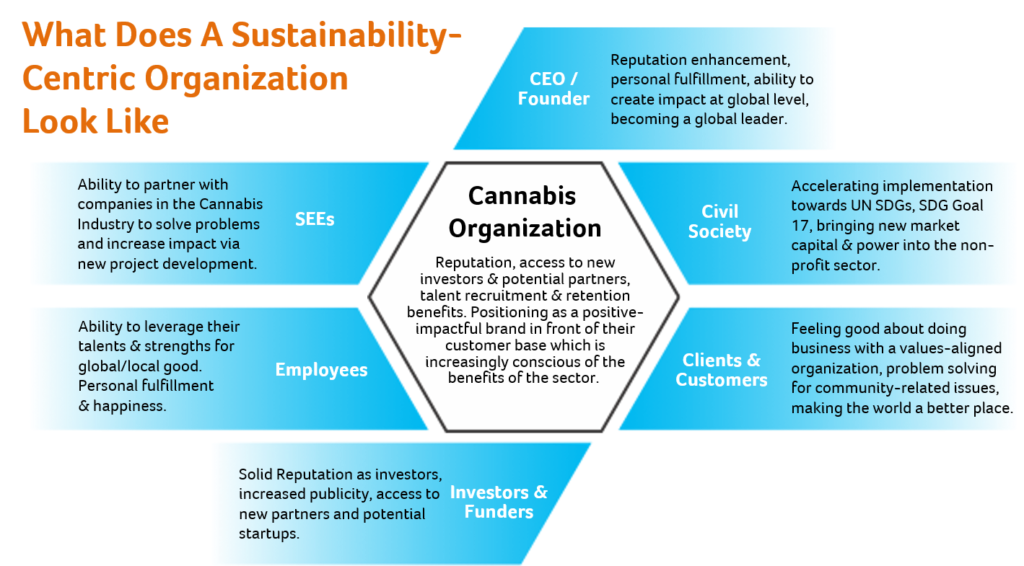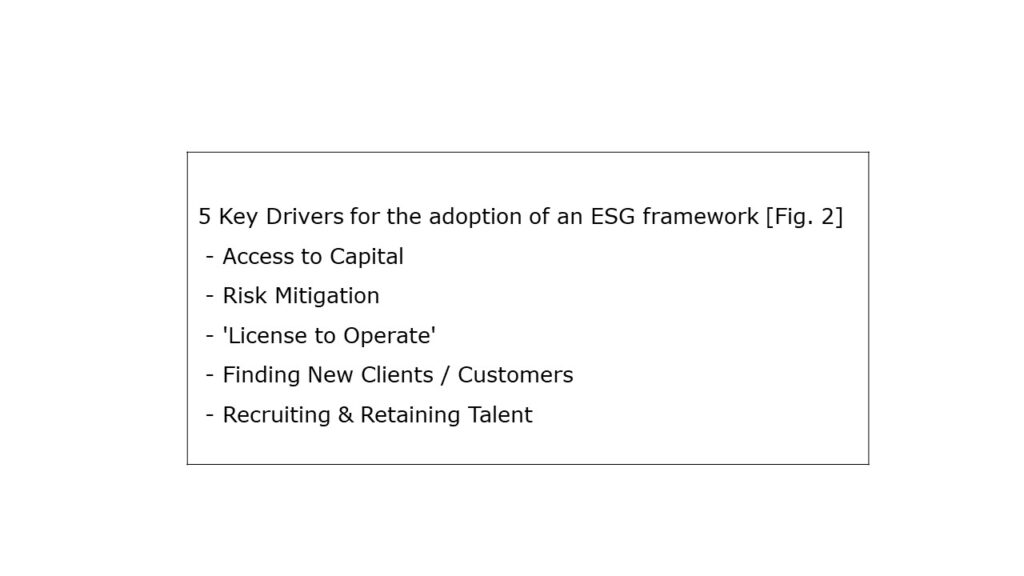At Regennabis, we believe there is a need to create a disruptive and innovative cannabis community.
This community must be driven by exponential actions in alignment with the UN Sustainable Development Goals (SDGs) to deliver increased business and brand value.
At the same time, the industry has to provide solutions to many of the world’s biggest challenges and build a better future for everyone in the cannabis space.
The community must lead, learn, connect, and innovate breakthrough solutions around humanity’s greatest challenges while delivering for stakeholders.
This places sustainability as one of the single biggest challenges — and opportunities — facing cannabis companies today; and an ever-increasing number of companies, investors, consumers, and governments believe it is a challenge worth tackling head on.
Sustainability, planned for and executed diligently, ticks many boxes on a Chief Executive’s list of ‘Must Do Well,’ or at least, it ought to.
Whether related to the P&L account, the balance sheet, or the cash-flow statement of an organization, sustainability reduces risks (financial and non-financial), saves money, drives revenues, stimulates innovation, and enhances brand reputation.
Sustainability engages and delights clients, customers, and colleagues — and gets the right kind of attention from the investor community.
This means that this is not only relevant for a company’s shareholders — but for their stakeholders too, all of them: clients and customers, employees (and their families), the communities within which they operate and serve, media platforms that may influence or be influenced, as well as governments and regulators within their local, regional, national and/or global jurisdictions.
Fig. 1 provides a view of what a sustainability-centric organization delivers for its key stakeholders when implemented.

Sustainability and Cannabis – Why Now?
The short answer to this question is simply because stakeholders in the nascent legal industry are demanding that a different version of the industry emerge; one that is absent of quarterly write-downs, class action suits, over-statements or mis-statements from some of the larger players, both north and south of the border.
At Regennabis, we are seeing a growing number of companies embracing a long-term view for their business, one which places sustainability as being fully integrated in their strategic, financial, and operational goals.
This “journey” is one that oftentimes begins with an organization understanding their “purpose,” i.e. the answer to the “Why do we exist?” question.
With an increasing understanding that there are multiple stakeholders to satisfy, these ahead-of-the-curve organizations also recognize that to realize their “purpose,” they need a roadmap for the journey they wish to undertake.
Increasingly, this roadmap is found in a company’s ESG [Environmental, Social & Governance] Framework. Embracing an ESG focus internally, as a core enabler, then subsequently sharing externally through a series of sustainability goals and objectives, an organization will create opportunities for operational excellence, business differentiation, and shareholder appeal. These aspects result in additional business value for the organization’s financial owners as well as for all stakeholders.
Increasingly, investors also believe that time is of the essence for cannabis companies to deliver to their strategic, financial, and operational goals through the successful build-out and implementation of an ESG Framework.
For Kellie Seringer, Founder of Symmetry Capital/Medicus LP, the focus on ESG is an imperative; without such, she simply cannot invest in a company.
Seringer states that she “places a set of ESG ‘principles’ at the forefront of the diligence undertaken when looking to deploy capital into both the public and the private sectors.”

Regennabis has identified the five key drivers for the adoption of an ESG Framework [see fig. 2].
Given that “Access to Capital” is one of them, it follows then that from such a base of understanding of the ESG factors material to their business, these “forward thinking, long-term” smart companies will be best-positioned to build-out a suite of sustainability, communications, and branding objectives, putting them on a clear path to deliver greater business and brand value and be real leaders in this nascent industry.
The ESG Journey – When Should a Company Begin Creating Their Roadmap?
Today, not tomorrow — is the answer to this question.
While some cannabis company leaders believe that such internal focus is more for late-stage organizations, others believe we should await standards or regulatory guidelines, which will surely come upon full legalization, but just not tomorrow.
And yet, in the absence of such standards or regulations, investors are increasingly indicating it can never be too early for a company to start their “ESG Journey.”
In fact, as an organization seeks more capital to fuel growth and works toward becoming a publicly-listed entity (or a target for acquisition), an early focus on ESG factors will mean that future valuations of the company will be reflected favorably for existing shareholders, ergo, creating business value.
The overarching sense is that we ought not wait for standards because the de-facto “standard” of running a business to deliver multi-stakeholder value is already here.
Internally, embracing this roadmap will help companies define and execute on a sustainability-centric continuous improvement plan, involving collaboration with suppliers, customers, and consumer facing organizations, and then subsequently engaging these stakeholders in discussions around materiality.
Externally, a company’s marketing and communications outreach will use this framework to tighten-up existing relationships and open doors for additional conversations with investors.
This ensures the creation of increased brand value.
In this era of disruptive innovation, the cannabis industry could potentially garner the “eyes & ears / hearts & minds” of a hugely influential group of consumers, i.e. more than 1 billion Millennials & Gen Z — as well as an aging population of Boomers who are increasingly turning to alternative medicines as a path to extended health and wellness.
At Regennabis, we see an opportunity for this industry to provide the trust and positive reputation, along with a sustainable product mix and mindset.
With guidance, this industry could disrupt the existing mono-capitalist market structure to one that flourishes on a multi-capital framework — and deliver solutions to many of humanity’s greatest challenges.
This is the opportunity of our time. We should not let it pass us by.






